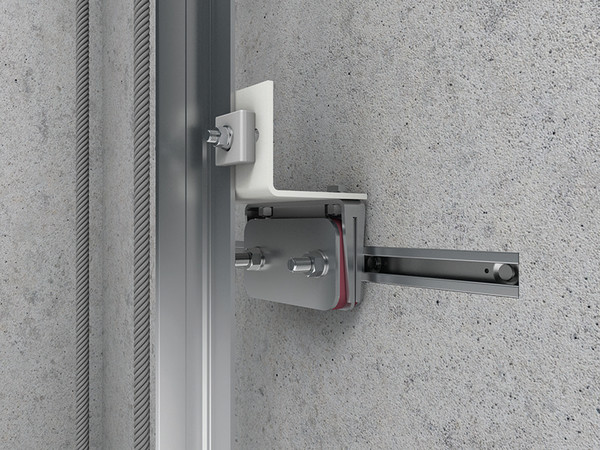Mastering noise insulation requirements in lift building
Lifts and noise insulation have a fascinating connection. At the latest, since DIN 8989 (noise insulation in buildings – lifts) entered into force in August last year and everyone involved are expected to support it.
In order to examine the challenges and experience of the industry in more detail, Pohlcon Vertriebs GmbH initiated a series of talks with experts and users from the industry. Ulrich Nees has been dealing with the subject of noise in lifts for 15 years. He passes on the knowledge he has gathered in talks and courses: in addition, he carries out noise measurements on request and evaluates the quality of lifts and the components used there.
His findings in recent years have shown, "The importance of noise insulation in lifts building has risen considerably. Since the entry into force of DIN 8989, clear requirements exist regarding the airborne and structure-borne noise level lifts may emit and what surface-related mass the walls have to possess to achieve the noise insulation targets."
Dennis Dreiling, head of the technical office of M.S. Aufzüge, has identified rising expectations of travel comfort with simultaneous lowering of emissions during his daily work. "On top of this is the difficulty that every dimension of shaft geometry continues to be reduced," he explained. "Shafts are getting increasingly narrow, shaft heads and pits are getting shorter. All of this contradicts the rising requirements in technical terms and requires elaborate construction solutions."
Mitigating interfaces
Anno Klinkenberg, specialist for lift technology of TÜV Rheinland, sees two problems above all: the interfaces to the building and the design of the building itself. "In critical cases, a structural engineer should be consulted during building design. "This is because if there are planning errors, the effects are audible in the building. Such errors can hardly be properly corrected retrospectively, since repairs are only possible on the lift.
"By contrast, interfaces can be mitigated by suitable insulation," added Klinkenberg. Ideally, this should occur in advance in order to avoid annoyance and additional work.
Insulation of the rails
 The Jordahl lift isolation Photo: © Pohlcon
The Jordahl lift isolation Photo: © Pohlcon"Noise insulation in lift building is inseparably associated with the building and as a result the interface of the two structures," concluded the assessor and expert for lift technology, Professor Wolfram Vogel. New materials in building would raise additional questions. This involved an interplay of building technology, facility management and mechanical engineering, as is in part already practised in high rise projects.
"In the end, all building trades have to sit down at a table and discuss the measures needed," according to Bernd Böhme, who has many years of experience in the field of planning and design of lifts and works as a teacher at the VFA‐Akademie. "Depending on the circumstances, the architects may have to adjust the shaft dimensions to enable components to be installed to decouple the guide rails."
Advantages of noise insulation elements
Anno Klinkenberg mentions the lift insulation JAI as an optimal tool for this. The product of the manufacturer Jordahl provides decoupling between the lift and the building. "The effectiveness of JAI has been proven and it can be installed without any problems," in the view of Klinkenberg, who tested the product before its market launch.
JAI provides security in use thanks to the available expert opinions, laboratory and practical tests and voluntary type approval test. JAI achieved structure-borne sound insulation of up to 26 dB in the Fraunhofer Institute test laboratory.
More information: Pohlcon Vertriebs GmbH is the sales organisation of the construction partners PUK, Jordahl and H‐BAU Technik. Among other things, Pohlcon deals with lift shafts and offers a product for decoupling the guide rails from the shaft wall in the form of the JAI lift insulation.
jordahl-group.com
pohlcon.com
You can find more detailed information at lift-journal.de/jai























Write a comment